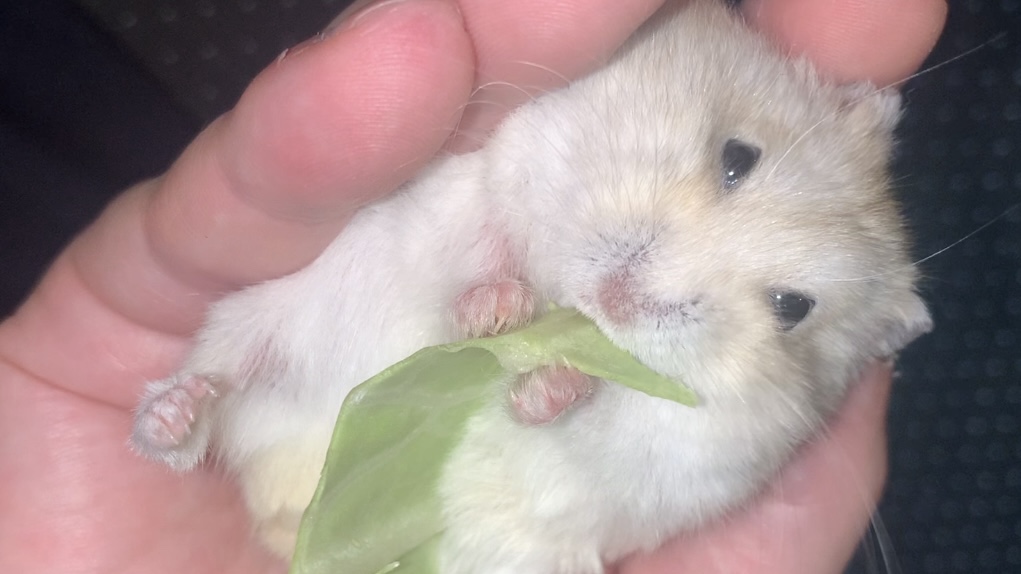For owners who are struggling because “My hamster isn’t getting attached…” or “I want to interact with my hamster!”, or “I long for my hamster to sit on my hand and eat!” we introduce methods to help your hamster become more affectionate and the steps to hand-tame them.
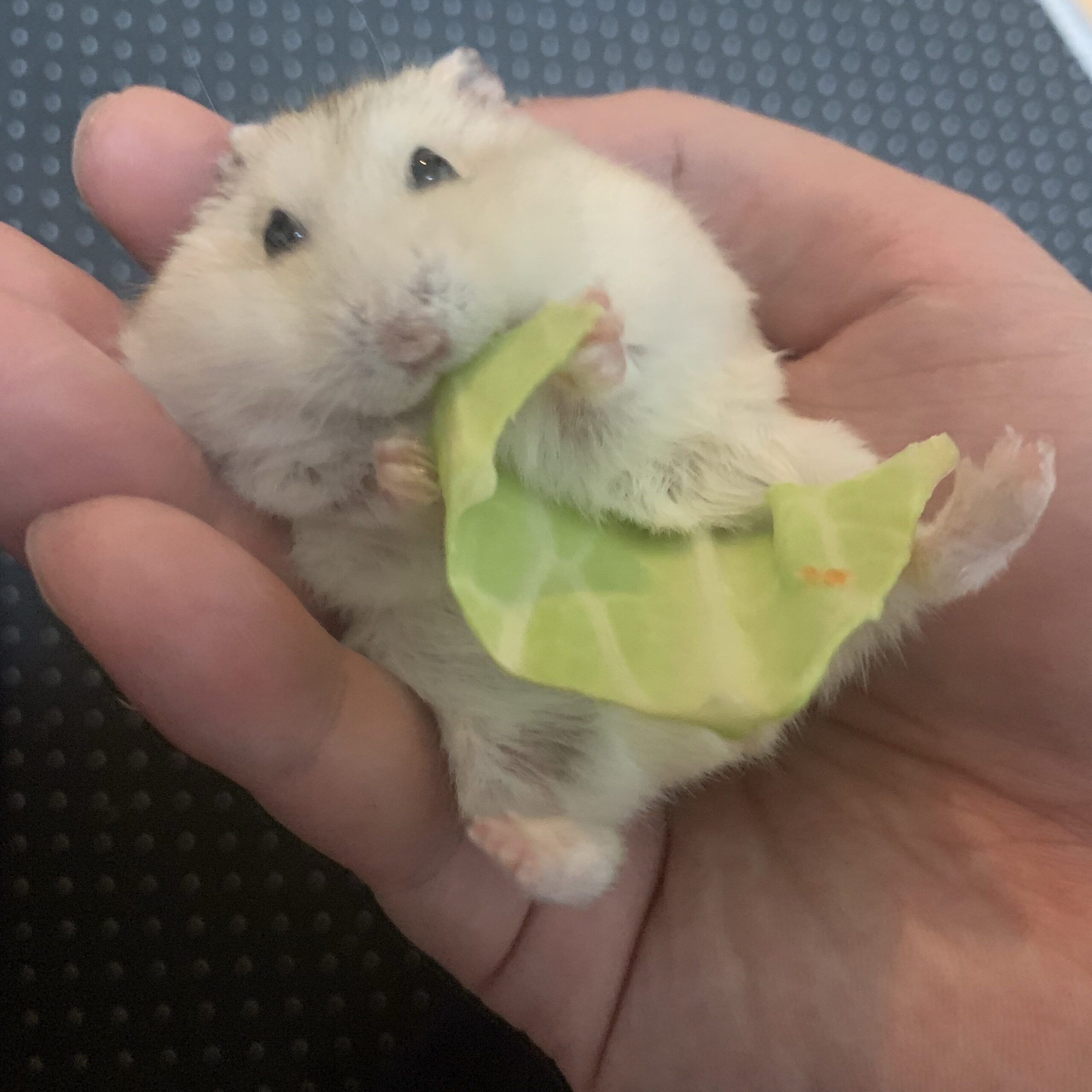
The deadline to bond is within the first year
The most easily affectionate period for hamsters is said to be around 1 to 2 months after birth. Baby hamsters just brought into the pet shop are usually about that age.
If you handle them appropriately from a young age, they tend to become more affectionate. However, until about 2 months after birth, they are very delicate to environmental changes and temperature, so you need to thoroughly prepare their living environment.
It’s possible for hamsters to become affectionate within about a year after birth.
Even initially timid ones tend to become accustomed to more and more physical contact over time.
It’s said to be difficult to bond with them after about 1 year, so if that time has passed, it’s best not to force contact and instead maintain an appropriate distance.
Hamster breeds and genders that are more affectionate
The hamsters that tend to be more affectionate are Syrian hamsters (Golden Hamsters) and Winter-White Dwarf hamsters (Djungarian hamsters).
If you want to interact with them, it’s safest to choose one of these breeds.
Also, males tend to be more affectionate than females.
Steps to tame your hamster and make it hand-tame
Below, we introduce the steps to tame your hamster and make it hand-tame.
[Step 1] Help them get accustomed to the living environment
The first impression is crucial.
If you mishandle your hamster when you first bring it home and make it afraid, it will be difficult to bond with it later on.
Avoid touching the hamster for the first week after bringing it home.
Only provide the minimum necessary care and keep quiet until the hamster gets used to its new environment and feels safe.
[Step 2] Make them associate your scent with a positive experience
Rather than immediately interacting with the hamster, gradually get it used to the scent of your hand beforehand.
Offer treats by your hand to let the hamster get used to the scent of your hand.
Hold the treat with your fingers and offer it to the hamster to eat.
Start with treats with a longer distance from your hand at first.
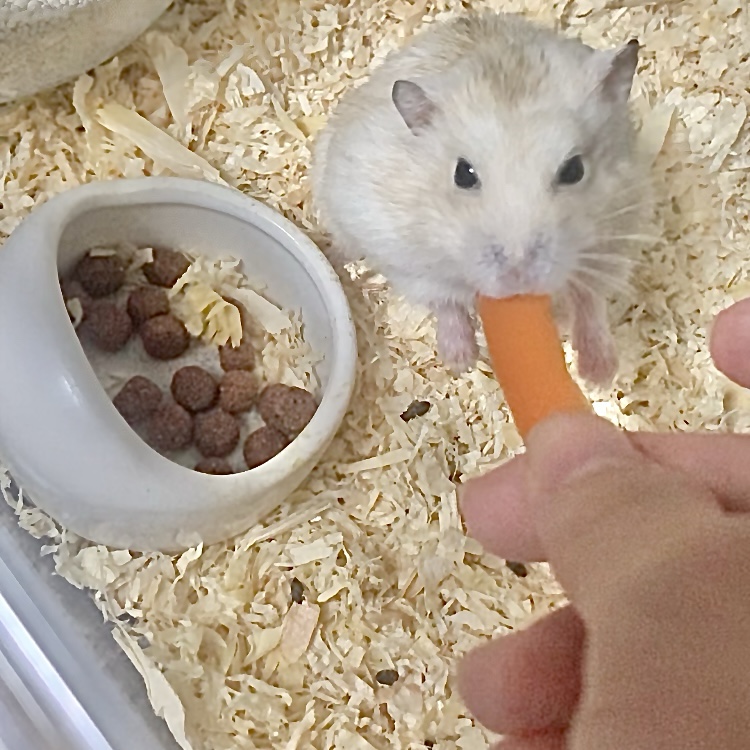
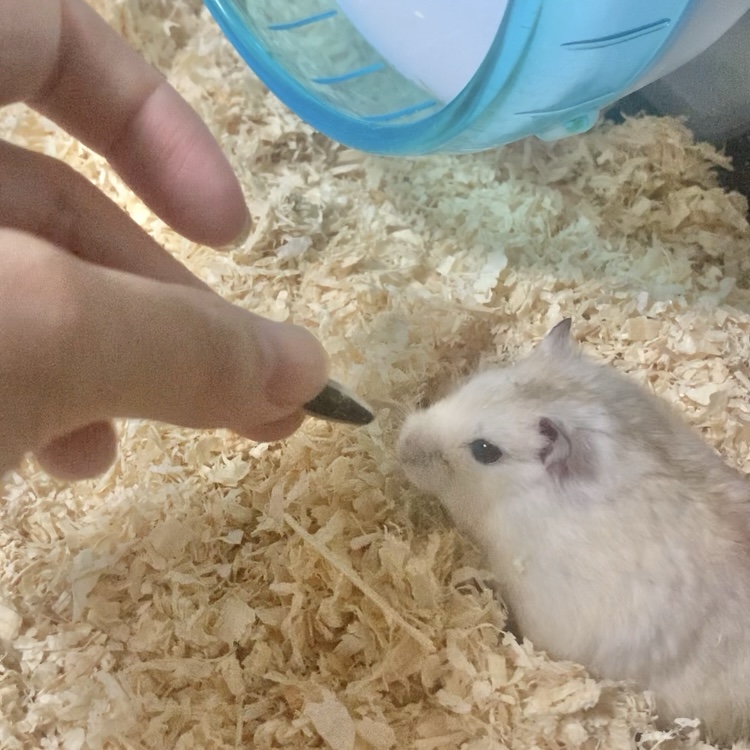
Success is when the hamster associates “owner’s hand = a nice person who gives tasty treats!”
On the other hand, to avoid the impression that “owner’s hand = an intruder who invades my territory,” be careful not to give a negative impression when cleaning.
If possible, wear gloves every time you clean to change your scent and make it seem like a different person.
[Step 3] Practice hand-taming
Place a treat on the palm of your hand and wait for the hamster to climb onto your hand and eat it by itself. With patience, the hamster will gradually become more comfortable climbing onto your hand.
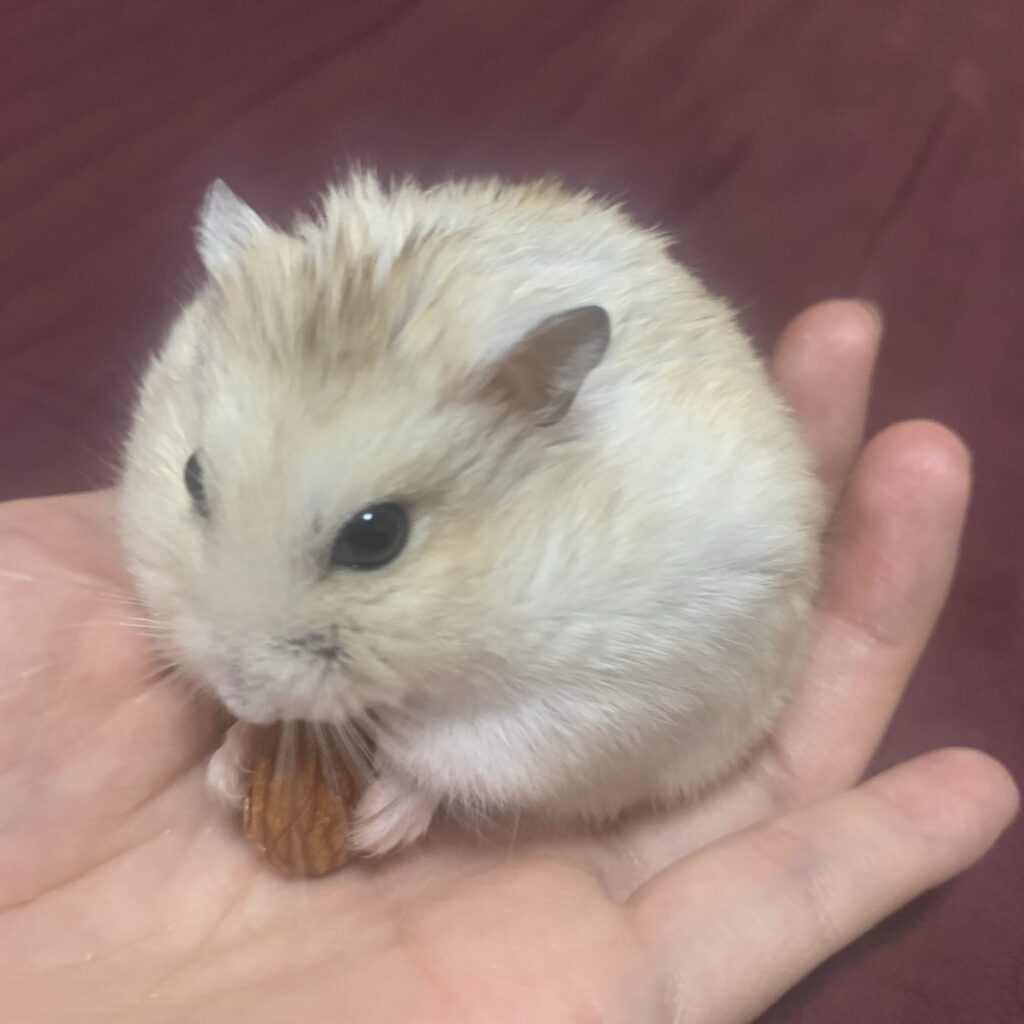
In the early stages of interaction, the hamster may lightly nibble your hand out of curiosity.
If this happens, avoid overreacting with loud noises or sudden movements, as it may scare the hamster.
If you’ve gone through Step 2, it’s unlikely that the hamster will bite aggressively out of hostility, so try not to be overly fearful when interacting.
Always wash your hands after interacting with your hamster!
There are diseases that can be transmitted between humans and hamsters, so be sure to wash your hands after interacting with your hamster.
One of the typical infectious diseases transmitted from hamsters is “ringworm.”
A type of fungus called “fungus” infects the skin, causing itching and rash.
Also, you can become infected with a virus called “Lymphocytic Choriomeningitis Virus” from hamster feces and urine.
If infected, it is known to cause mild meningitis.
Although you love your hamster, refrain from activities such as kissing, as mucous membrane contact increases the risk of pathogen transmission.

